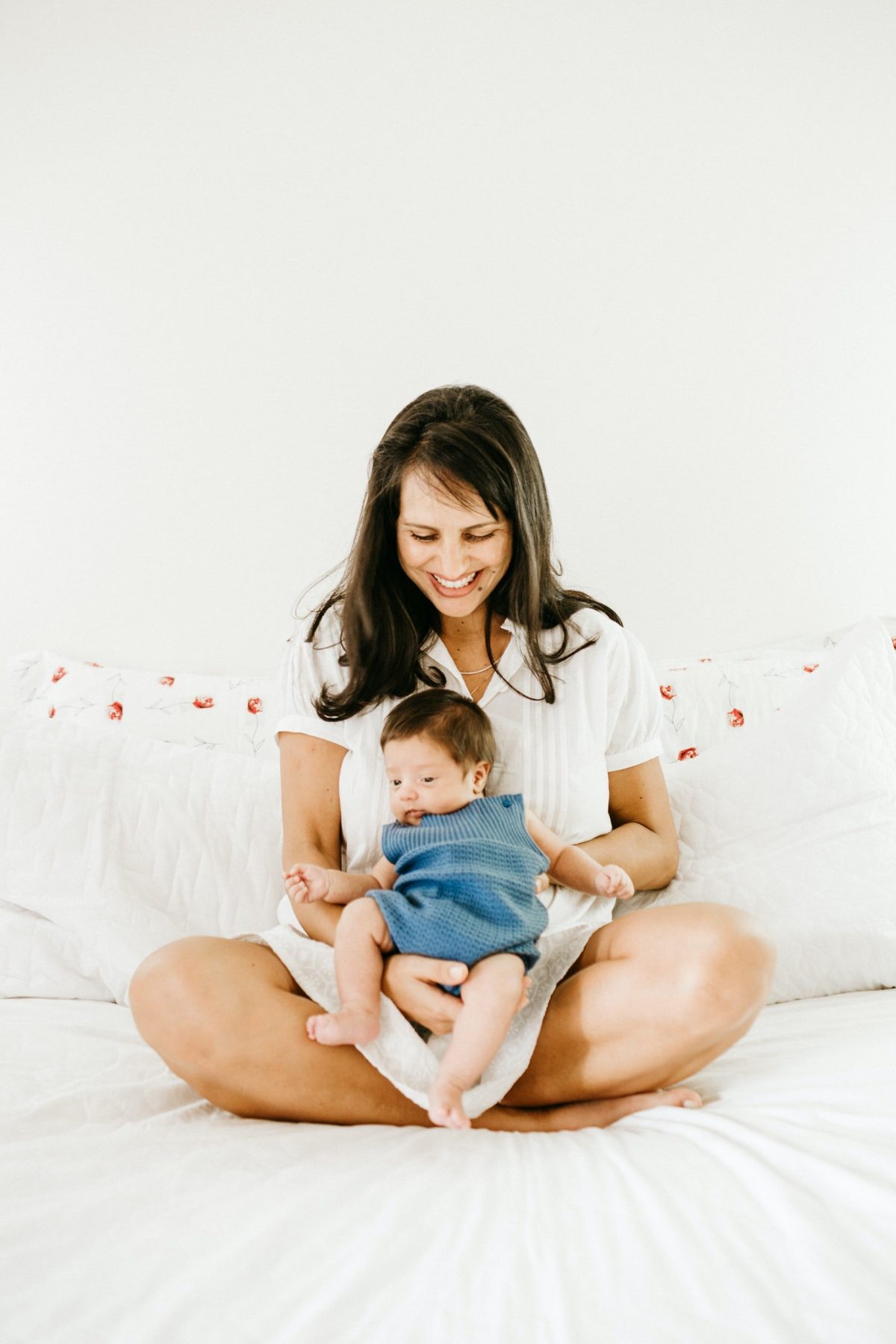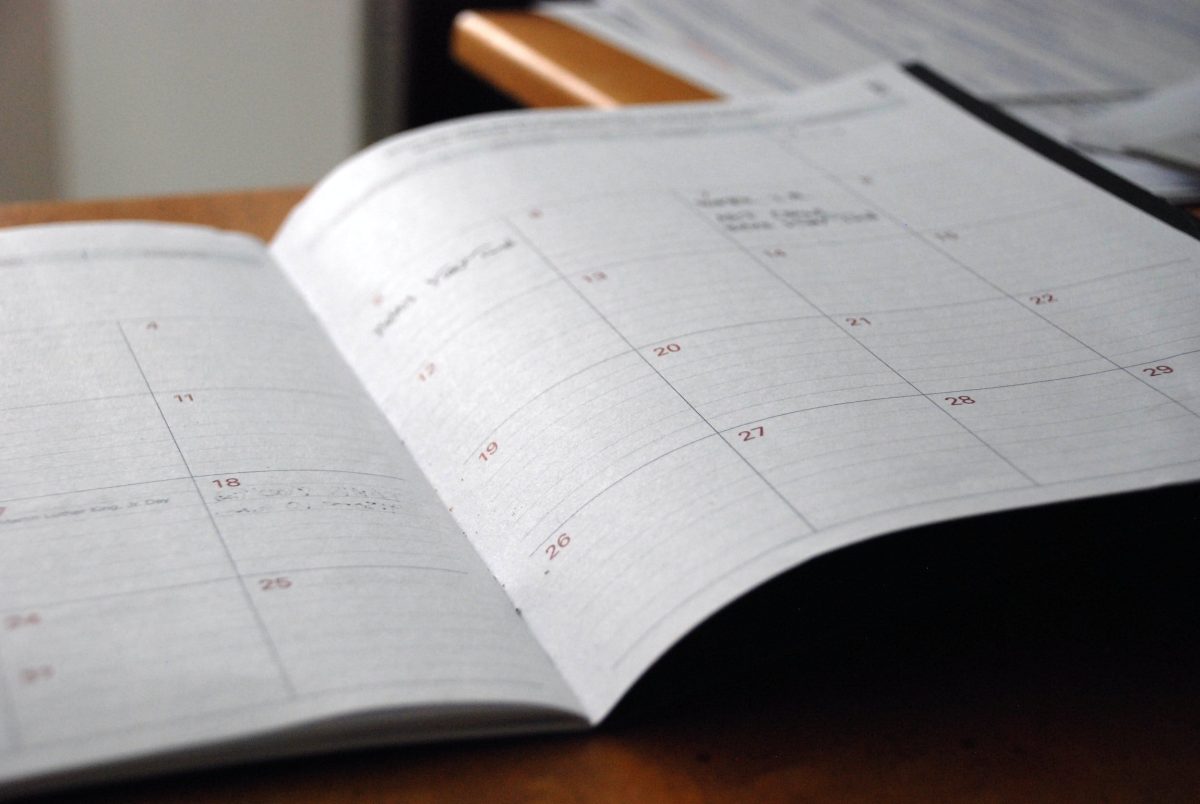
Post-pregnancy, women often have many questions. How does pregnancy really affect the body? What’s all this talk about the pelvic floor? When can you start working out? When will you start getting your period again? Sylvia Brown, author of the Post-Pregnancy Handbook, answers these questions and many more in an exclusive interview.
Remember That Every Body Is Different
Verywell: What is the most important thing that women should know about what happens to their bodies post-pregnancy?
Sylvia Brown: Each woman will react differently to the effects of pregnancy and childbirth. Like mountain climbing or scuba diving, it’s hard to know how your body will cope until you experience it. Much depends on how tired you were at the end of your pregnancy, whether you are lacking in iron or other nutrients, and what sort of childbirth you went through. C-section? episiotomy or tear? Long labor?
Pregnancy and childbirth have a nasty tendency to cause a number of nagging minor health problems—back pain, hemorrhoids, constipation, and varicose veins, to name a few—or to reveal dormant ones. Close to half of new mothers have at least one health concern in the weeks following childbirth.
The postpartum period is a time of transition during which we must take care of ourselves.
The one inevitable challenge which confronts all new mothers is coping with fatigue. It takes only seven to eight hours of missed sleep in a week to begin showing signs of sleep deprivation, and fatigue is one of the principal causes of depression. My three tips to overcoming fatigue are:

-
Plan ahead before the baby’s birth. Who will help with household chores? Who will take care of the older children? Who will you be able to leave the baby with to get out of the house for a short break? Ask your friends for babysitting or housekeeping help as a baby gift, or for someone to shop, cook a meal and wash the dishes for you.
-
Sleep whenever you can. Ideally, you should have two naps a day in the first few weeks. If the baby is napping, drop everything and sleep as well. Nothing is more important than your rest.
-
Get out. Take time for you. Get out of the house to do some sort of “adult” activity each day, even if only for 45 minutes. You’ll be amazed by how quickly this can lift your spirits.
Planning Ahead for Post-Pregnancy Recovery
VW: What can women do before pregnancy to help ensure an easy post-pregnancy experience?
SB: Plan, plan, plan. I’m always amazed at how many women think that once the baby is born, they will just ride off into the sunset. Unfortunately, most childbirth preparation classes do not warn future mothers enough about the upheaval that they are about to undergo.
Recovery Time
VW: How long does it really take for a woman’s body to return to its pre-pregnancy condition?
SB: The first six weeks are a time of healing, rebalancing, and recovery. It takes the genital organs six weeks to two months to return to their original size and function. The pregnancy hormone relaxin, which increases the size and elasticity of connective tissues—ligaments, muscles—will remain in a new mother’s body for up to five months. This is why a new mother’s joints are so fragile (50% experience back pain) and why any high-impact activity puts tremendous stress on the pelvic floor and the abdominal organs.
Prolactin, the hormone that produces milk in breastfeeding mothers, has a similar effect. In 66% of women, the vertical abdominal muscles separate and take at least six weeks to heal. For these reasons, it is important to limit exercise to gentle pelvic floor and abdominal exercises, walking and swimming (once you have fully stopped bleeding) for two months, or 10 weeks after a C-section. Eight weeks after childbirth, you can begin toning in 15-minute sessions, building up by five minutes a week. You can start to play tennis, bike, and do low-impact aerobics again four to five months after childbirth.
Regarding weight, much depends on your size before you became pregnant. About a third of new mothers who gained only 25 to 30 pounds will be back to their normal weight about three months after childbirth. Older moms, third- or fourth-time mothers or borderline overweight women will lose most of their excess weight between three and six months after childbirth. Overweight women will lose most of their excess weight six to nine months after childbirth. They also benefit the most from breastfeeding for more than five months.
Some women find that nagging, minor postpartum health problems, such as hemorrhoids, varicose veins, bleeding gums and skin pigmentation, last for months. Medical attention is important in these cases because something can usually be done to stop it. Sex may be uncomfortable for quite some time, especially if you have had many stitches. Check with your health practitioner to make sure that you don’t have an undissolved stitch. Lots of lubrication and patience are essential.
Finally, some women find that aspects of their body change permanently after childbirth, such as the way fat is distributed, foot size, breast size, or hair quality.
Vaginal Births vs. C-Section Births
VW: How is recovery from birth different for women who had a vaginal birth vs. women who had C-sections?
SB: After a vaginal birth, a new mother may experience discomfort in her genital area—particularly if she had an episiotomy or tearing—as well as hemorrhoids. She may also feel sharp lower back pain if her coccyx was displaced. She may take longer to find sexual intercourse pleasurable again.
After a cesarean section, a new mother may experience discomfort as her digestive functions return to normal due to trapped gas. Her scar may itch and burn. Occasional pain and burning sensations can last for six to eight weeks. She will have to wait longer to start an exercise program: about 10 weeks.
Space Between Pregnancies
VW: How long should women wait between pregnancies? Why is this important?
SB: Again, this depends on the number of pregnancies you have already had, the type of birth you had, how tired you were, and how well your body recovered. It is interesting to note that in primitive societies, babies are naturally spaced about every two years, as mothers breastfeed almost constantly for a year. Obviously, the more fully recovered you are from your previous pregnancy, the better your next pregnancy will feel.
Postpartum Incontinence
VW: Does having a baby mean that future incontinence is to be expected?
SB: While it is true that one in three new mothers does experience some form of urinary or anal stress incontinence, such as leaking after a cough, a sneeze, a laugh or high impact such as a jump, in the weeks following childbirth, there is absolutely no reason to expect future problems with incontinence.
Unfortunately, most women do not know enough about their pelvic floor. Before birth, we prepare our bodies to open up but we forget that closing up also requires effort. This process is essential to becoming a woman again as pelvic floor tone has a direct impact on the quality of sex.
During pregnancy, the weight of the uterus increases by 20 to 30 times. As it grows, the uterus pushes the bladder downward. Furthermore, the muscles and ligaments that normally hold up the reproductive and digestive organs are how weaker under the effects of relaxin. Childbirth will then stretch and distend these muscles, no matter how well a woman prepares for delivery. After a vaginal delivery, the pelvic floor loses about 50 percent of its tone. Episiotomies, tears and abnormal straining during the expulsion phase all add to the damage. If the pelvic floor muscles are not restored to their proper tone, the sphincters can no longer clamp down properly on the bladder—and in some cases on the anal—opening, causing leakage.
It is therefore essential to begin gentle pelvic floor toning exercises in the days after childbirth and to practice these for nine minutes a day for the first 6 weeks. Pelvic floor exercises are also very helpful in speeding the healing process after an episiotomy or tearing.
Do not begin an exercise program until your pelvic floor has recovered its tone. Your health practitioner should check your pelvic floor tone at your postpartum checkup. If they don’t, ask for it!
The Post-Pregnancy Belly
VW: Can a woman ever expect her abdomen to be firm and flat again after pregnancy? How can this be achieved?
SB: As I explained above, you should not begin serious abdominal work until:
-
Your pelvic floor is strong again. If not, the abdominal muscles will push down on the intestinal organs, which in turn bear down on the pelvic floor. If the pelvic floor muscles are too weak to provide the necessary support, urination, bowel movements and of course sexual function will be affected, a condition known as prolapse.
-
The two parallel vertical bands of abdominal muscles are less than two finger’s width apart. This means that for the first six to eight weeks—10 if you have had a C-section—you should do gentle, rebalancing abdominal exercises.
At two months after childbirth, you can begin abdominal work, starting with floor exercises. If you’ve had a C-section, stick to floor exercises for about eight months after childbirth. Avoid full sit-ups, bicycling or scissors. Focus on the obliques, whose job it is to pull in, lift and squeeze the stomach while supporting it. It will take time to tone the abdominal muscles, but they can be trained to look flat again.
Postpartum Depression

VW: What are the warning signs of postpartum depression or psychosis? When should a woman seek help for these conditions? How long after giving birth can these conditions occur?
SB: There are basically three main types of emotional reactions to childbirth:
-
Baby blues occurs between the second and eleventh day post-delivery, and is primarily caused by the enormous hormonal upheaval of a new mother’s body. It affects 80% of women, at all socioeconomic levels, no matter what their birth experience was like. The most common symptoms are tears (often for no apparent reason), mood swings, hypersensitivity, difficulty in concentrating, anxiety, feelings of discouragement and vulnerability, and restless sleep patterns. This condition lasts from 24 hours to seven days. It can be treated with rest and support. The other parent has an important role to play to shelter the new mother from too much outside interference and to make her feel loved and appreciated.
-
Depressive reactions often caused by exhaustion. Almost all new mothers experience tears, a sense of frustration, isolation, guilt, irritability, forgetfulness, or various physical symptoms linked to fatigue. These usually occur within the first four months after childbirth. The major difference from postpartum depression is that these responses occur intermittently and are remedied by more sleep, better nutrition or nutritional supplements, support and assistance with household help and recreation.
-
Postnatal depression is a psychiatric illness that affects one in 10 new mothers and must be treated with medication and therapy. In 40% of cases, postnatal depression starts after a new mother has been to her six-week check-up. Therefore it is often difficult to diagnose. New mothers are supposed to be happy! There is little tolerance or understanding for women who do not fit this image. While some of the symptoms are similar to the depressive reactions caused by fatigue and nutritional problems, the major difference is that in the case of postnatal depression, these feelings are continually present.
-
A woman may also experience panic attacks, obsessive thoughts and fantasies, and a high level of excitability. There is a predisposition to postnatal depression in cases where a woman has had previous psychological problems, or if her mother, aunt or sister have encountered this problem. Left untreated, postnatal depression can go on for years.
-
Puerperal psychosis is an extremely serious psychiatric illness that affects about one in 1,000 women, usually surfacing about two weeks after childbirth. It causes severe emotional upheaval, hallucinations, confusion, memory loss, and obsessive behavior. Immediate hospitalization is required. With the right treatment, most women recover completely.
How to Talk About Postpartum Depression
Return of Menstruation
VW: When should women expect normal menstruation to resume?
SB: This depends on whether you are breastfeeding or not. If you are not breastfeeding, your first period will occur about 2 months after childbirth. However, there is no way to know when you begin to ovulate again. Ninety percent of women will not ovulate before their first period. Contraception is essential if you have sex soon after childbirth.
If you are breastfeeding, your period may resume at any time starting about two months after childbirth. Some women only get their period back once they stop breastfeeding. It is important to know that breastfeeding is not a form of contraception. It is the sensation of the baby sucking that sends a message to the brain to suppress the hormone that stimulates ovulation. The effectiveness of this suppression depends on the strength and frequency of the sucking. For breastfeeding to work as a means of contraception, the baby would have to nurse full-time, around the clock.
Postpartum Sex and Contraception
VW: How long after childbirth should women wait before having sexual intercourse and/or using contraceptives? What type of contraceptive is best for a woman who has recently given birth? What type(s) of contraceptives should not be used by women who have recently given birth?
SB: Most health practitioners discourage women from having sex within the first six weeks after childbirth since the genital organs usually have not healed. Most new mothers claim that sex is the furthest thing from their minds at this stage. Many women who breastfeed find that the physical contact with their baby fulfills them entirely.
Most health practitioners recommend barrier contraceptives—condoms and spermicide—for breastfeeding women. In the first few months after childbirth, the vaginal walls are enlarged and the perineal muscles are lax, which means that a diaphragm cannot act as a proper barrier. Be sure to have a new diaphragm fitted two to three months after childbirth. If you choose to have an IUD inserted, you will have to wait until the uterus is fully healed.
The only form of contraceptive pill which does not contraindicate breastfeeding is the progesterone mini-pill, which works by hindering the production of cervical mucus. Ovulation can occur, but the uterine lining will not be receptive to the implantation of the egg. This pill has a failure rate of one to three percent, as well as an increased risk of ectopic pregnancy and breakthrough bleeding. It must be taken every day at exactly the same time.




